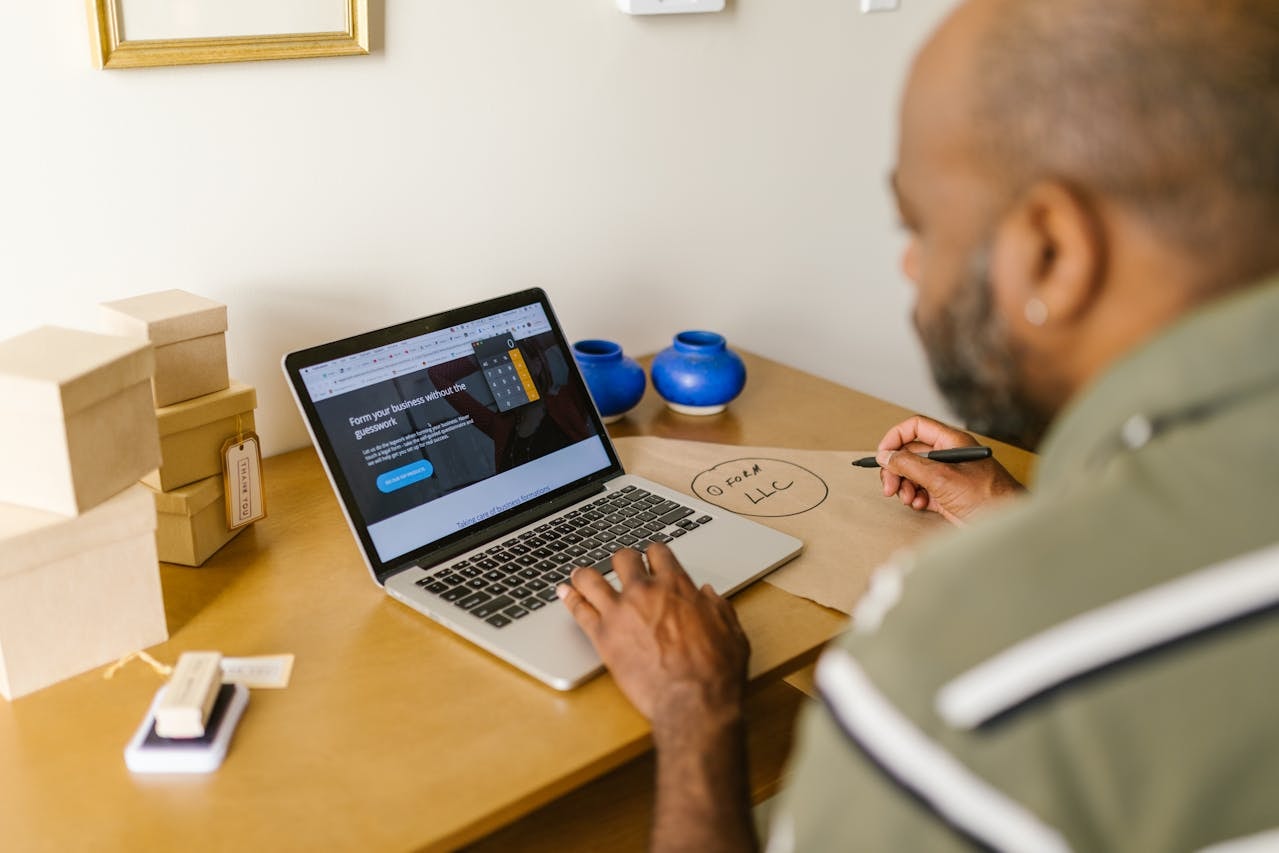In the competitive world of startups, making your mark can be a daunting challenge. The Australian market, with its unique dynamics, presents both opportunities and obstacles for new businesses.
But fear not—if you’re looking to boost your startup’s visibility and secure a strong digital presence, you’ve come to the right place. The secret weapon? Search Engine Optimisation (SEO).
SEO is not just a buzzword; it’s a vital strategy that can catapult your startup to the top of search engine results pages (SERPs), bringing in a steady stream of potential customers.
This comprehensive guide will walk you through essential search engine optimization strategies for startups, from understanding the basics to implementing advanced techniques that will help you outshine the competition.
The Digital Landscape for Australian Startups
Australia is a thriving hub for startups, particularly in tech, e-commerce, and innovative services. The country’s digital landscape is rapidly evolving, and as more businesses move online, the competition for digital real estate intensifies. For startups, establishing a strong online presence is crucial to standing out in a crowded market.
In Australia, the internet penetration rate is high, with over 90% of the population regularly using the internet. This presents a significant opportunity for startups to reach a broad audience. However, it also means that the competition for online visibility is fierce. This is where a well-crafted SEO strategy becomes indispensable. Startup SEO involves tailored strategies to help new businesses enhance their online presence and visibility in search engines, addressing unique challenges such as low authority and limited resources.
Why SEO Is a Game-Changer for Startups
Unlike large, established companies with hefty marketing budgets, startups often operate with limited resources. This makes it challenging to compete in paid advertising spaces. SEO for startups offers a cost-effective alternative, allowing startups to attract organic traffic and build a sustainable online presence over time.
The beauty of SEO lies in its ability to level the playing field. With the right approach, even a small startup can outrank established competitors in search engine results. By focusing on SEO strategies tailored to your business, you can drive more targeted traffic to your website, increase brand awareness, and ultimately, boost sales.
Breaking Down SEO: What It Really Means
SEO, or Search Engine Optimisation, is the practice of optimising your website and its content to improve visibility in search engine results. The goal is to attract organic traffic—visitors who find your site through unpaid search results. But how does this work? Let’s break it down.
On-Page SEO: Optimising the Content and HTML Source Code of Individual Pages
On-page SEO is the foundation of any successful SEO strategy. It involves optimising the various elements within your website’s content and HTML source code to ensure that each page is fully optimised for both users and search engines. The goal of on-page SEO is to make your site as relevant, accessible, and valuable as possible to both your audience and search engines like Google. Here’s a closer look at the key elements of on-page SEO:
1. Keyword Optimisation
Keyword optimisation is at the heart of on-page SEO. This involves identifying the most relevant keywords for each page and strategically placing them within your content. However, keyword optimisation is more than just sprinkling keywords throughout your text—it’s about using these keywords in a way that feels natural and provides value to the reader.
- Keyword Placement: Place your primary keyword in critical locations such as the page title, meta description, first paragraph, headers (H1, H2, etc.), and throughout the body content. Also, consider variations and related keywords to enhance the relevance of your content.
- Avoid Keyword Stuffing: Overusing keywords, known as keyword stuffing, can harm your SEO. Search engines may penalise your site if your content is stuffed with keywords in a way that compromises readability and user experience.
- Latent Semantic Indexing (LSI) Keywords: Use LSI keywords—terms and phrases that are closely related to your main keyword. These help search engines understand the context of your content better and improve your chances of ranking for related searches.
2. Meta Tags
Meta tags are snippets of text that describe a page’s content; they don’t appear on the page itself but only in the page’s HTML code. Meta tags are crucial for on-page SEO because they provide search engines with information about the content of your pages.
- Meta Titles: The meta title is the title of your page as it appears in search engine results. It should include your primary keyword and be compelling enough to entice users to click. Meta titles are often the first impression users have of your page, so make sure they are accurate and engaging.
- Meta Descriptions: The meta description is a brief summary of your page’s content that appears under the meta title in search results. Although not a direct ranking factor, a well-crafted meta description can significantly impact your click-through rate. Include your primary keyword and a clear call to action to encourage users to visit your site.
- Alt Text: Alt text is used to describe images on your page to search engines. Since search engines can’t “see” images, alt text helps them understand what the image is about. Include relevant keywords in your alt text to improve the SEO of your images.
3. Headers
Headers (H1, H2, H3, etc.) are used to structure your content and make it easier for both users and search engines to navigate. Proper use of headers is essential for on-page SEO because it helps search engines understand the hierarchy of your content.
- H1 Tag: The H1 tag is typically the title of your page and should contain your primary keyword. There should only be one H1 tag per page, and it should clearly reflect the topic of the page.
- Subheaders (H2, H3, etc.): Use subheaders (H2, H3, H4) to break down your content into sections. This not only makes your content more readable but also helps search engines understand the structure and importance of the information on the page. Including keywords in your subheaders can further enhance SEO.
- Content Hierarchy: Ensure that your headers follow a logical hierarchy. For example, an H2 should follow an H1, and an H3 should be a sub-section of the H2. This structure helps both users and search engines follow the flow of your content.
4. Internal Linking
Internal linking is the practice of linking to other pages within your website. This strategy is crucial for on-page SEO because it helps search engines understand the relationship between different pages on your site and distribute page authority.
- Improving Navigation: Internal links improve user experience by making it easier for visitors to navigate your site. By guiding users to related content, you can increase their time on your site and reduce bounce rates.
- Distributing Link Equity: Internal links help distribute link equity (the value passed from one page to another via links) across your site, boosting the SEO of individual pages. Linking from high-authority pages to newer or less visible pages can help improve their rankings.
- Anchor Text: The clickable text of an internal link, known as anchor text, should be relevant to the linked page and include keywords where appropriate. This helps search engines understand the context of the linked page and can improve its rankings for related queries.
Off-Page SEO: Activities Outside Your Website That Impact Rankings
While on-page SEO focuses on elements within your website, off-page SEO involves activities that occur outside of your website but still impact your rankings. Off-page SEO is crucial for building your site’s authority, credibility, and relevance in the eyes of search engines. Here’s an in-depth look at the key components of off-page SEO:
1. Link Building
Link building is the process of acquiring hyperlinks from other websites to your own. These inbound links, also known as backlinks, are one of the most important off-page SEO factors because they signal to search engines that your content is valuable and authoritative.
- Quality Over Quantity: Not all backlinks are created equal. A single high-quality backlink from a reputable site can be more valuable than dozens of low-quality links. Focus on earning links from authoritative sites within your industry or niche.
- Natural Link Building: Natural backlinks are links that you earn organically because other sites find your content valuable and decide to link to it. Creating high-quality, shareable content is key to earning natural backlinks.
- Guest Blogging: Writing guest posts for other websites in your industry is a great way to build backlinks. In exchange for providing valuable content, you typically receive a backlink to your site. Ensure that you’re guest posting on reputable sites that are relevant to your niche.
- Avoid Black Hat Techniques: Black hat SEO techniques, such as buying links or participating in link farms, can result in severe penalties from search engines. Focus on white hat link-building strategies that comply with search engine guidelines.
2. Social Media Marketing
Social media marketing plays an important role in off-page SEO by increasing your content’s visibility, driving traffic to your website, and indirectly contributing to your SEO efforts. While social media signals (likes, shares, comments) are not direct ranking factors, they can influence SEO in several ways.
- Content Promotion: Use social media platforms to share your content and reach a broader audience. The more your content is shared, the more likely it is to be seen and linked to by others, which can enhance your SEO.
- Building Brand Awareness: A strong social media presence helps build brand awareness and authority. When people see your brand consistently across different platforms, they are more likely to trust and engage with your content, both on social media and your website.
- Engagement and Interaction: Engaging with your audience on social media helps build relationships and encourages more shares and interactions with your content. Increased engagement can lead to more traffic and potential backlinks to your site.
- Social Media Profiles in Search Results: Your social media profiles can appear in search engine results, providing additional opportunities for visibility. Optimise your profiles with relevant keywords to improve their rankings.
3. Influencer Outreach
Influencer outreach involves partnering with influencers—individuals with a large following and authority in your industry—to promote your content or brand. Influencers can amplify your reach, enhance your brand credibility, and contribute to your off-page SEO efforts.
- Identifying Relevant Influencers: Choose influencers whose audience aligns with your target market. Their endorsement can lend credibility to your brand and attract new followers and customers.
- Building Relationships: Establish genuine relationships with influencers rather than simply asking for promotion. Offer value, whether through collaboration, providing valuable content, or mutual promotion, to build long-term partnerships.
- Content Collaboration: Collaborate with influencers on content creation, such as guest blogs, podcasts, or social media campaigns. This content can attract attention from both the influencer’s audience and search engines, leading to increased visibility and potential backlinks.
- Measuring Impact: Track the impact of influencer campaigns by monitoring referral traffic, social media mentions, and any resulting backlinks. This data can help you assess the ROI of your influencer outreach efforts.
Technical SEO: Optimising the Backend for Better Crawlability and Indexing
Technical SEO focuses on the backend aspects of your website that influence how well search engines can crawl, index, and rank your content. While technical SEO may not be as visible to users, it is crucial for ensuring that your site is search-engine-friendly and can achieve optimal rankings. Here’s a detailed breakdown of key technical SEO elements:
1. Site Speed
Site speed, or the time it takes for your web pages to load, is a critical factor in both user experience and SEO. Slow-loading websites can lead to higher bounce rates, lower user engagement, and reduced conversions. Moreover, search engines like Google prioritise fast-loading sites in their rankings.
- Page Load Time: Aim to have your pages load within 2-3 seconds. Any longer, and you risk losing visitors. Use tools like Google PageSpeed Insights to measure your site’s speed and identify areas for improvement.
- Image Optimisation: Large images can significantly slow down your website. Compress images to reduce their file size without compromising quality. Tools like TinyPNG and ImageOptim can help with image compression.
- Browser Caching: Enable browser caching to store some elements of your site in visitors’ browsers. This reduces the amount of data that needs to be loaded on subsequent visits, speeding up page load times.
- Minimise HTTP Requests: The more HTTP requests your site makes (for images, scripts, stylesheets, etc.), the longer it takes to load. Minimise the number of requests by reducing the number of elements on your pages and combining files where possible.
2. Mobile Optimisation
With mobile traffic surpassing desktop traffic, ensuring your website is fully optimised for mobile devices is essential. Google’s mobile-first indexing means that the mobile version of your site is considered the primary version for ranking purposes.
- Responsive Design: Implement a responsive design that automatically adjusts your site’s layout and content to fit different screen sizes and devices. This ensures that users have a seamless experience whether they’re on a smartphone, tablet, or desktop.
- Mobile-Friendly Content: Ensure that your content is easy to read and navigate on mobile devices. Use larger fonts, shorter paragraphs, and clear CTAs that are easy to tap on a small screen.
- Page Speed on Mobile: Mobile users expect fast load times, so optimising your site for speed is even more critical on mobile devices. Use tools like Google’s Mobile-Friendly Test to assess your site’s mobile performance and make necessary adjustments.
- Avoid Intrusive Interstitials: Google penalises sites that use intrusive interstitials (pop-ups) on mobile devices, as they can negatively impact user experience. Ensure that any pop-ups are easy to close and do not obstruct the main content.
3. Structured Data
Structured data, also known as schema markup, is a way of formatting your content so that search engines can understand it better. Implementing structured data can enhance your search results with rich snippets, providing users with more information directly in the SERPs.
- Schema Markup: Schema.org provides a vocabulary that you can use to mark up your content. This can include information such as product details, reviews, events, recipes, and more. Structured data helps search engines understand the context of your content, which can improve your visibility.
- Rich Snippets: Rich snippets are enhanced search results that include additional information such as star ratings, images, and pricing. Implementing structured data can increase the likelihood of your content being displayed as a rich snippet, which can boost your click-through rates.
- Featured Snippets: Featured snippets are short summaries of content that appear at the top of Google’s search results. They provide a quick answer to the user’s query and can drive significant traffic to your site. Optimise your content for featured snippets by answering common questions directly and concisely.
- Breadcrumbs: Implement breadcrumbs on your site to improve navigation and user experience. Breadcrumbs show users their location within your site and can also appear in search results, providing additional context for search engines.
4. Crawlability and Indexability
Crawlability refers to how easily search engines can access and crawl the pages on your website. Indexability refers to how easily these pages can be indexed, or stored in the search engine’s database for retrieval.
- XML Sitemap: An XML sitemap is a file that lists all the important pages on your website, helping search engines crawl and index your content more efficiently. Ensure your sitemap is up to date and submitted to Google Search Console.
- Robots.txt File: The robots.txt file tells search engines which pages of your site they are allowed to crawl and which they should ignore. Use this file to prevent search engines from crawling duplicate content, low-value pages, or any sections of your site that aren’t meant to be indexed.
- Fix Broken Links: Broken links can hinder search engines from properly crawling your site and negatively impact user experience. Regularly check for and fix broken links using tools like Ahrefs or Screaming Frog.
- Canonical Tags: Use canonical tags to indicate the preferred version of a webpage when you have multiple pages with similar or identical content. This helps prevent duplicate content issues and ensures that search engines index the correct version of your page.
Crafting an Effective SEO Strategy
An effective SEO strategy is built on a deep understanding of your target audience, the competitive landscape, and the specific goals of your startup. Identifying the right target keyword is crucial, as it should evolve with changing digital strategies and user queries. Here’s how to craft an SEO strategy that drives results.
Defining Your SEO Goals
The first step in any SEO strategy is to clearly define your goals. What do you want to achieve with SEO? Your goals could include increasing website traffic, improving search engine rankings, generating more leads, or boosting sales. Having clear goals will guide your SEO efforts and help you measure success.
Understanding Your Audience
Your SEO strategy should be rooted in a deep understanding of your target audience. Who are your potential customers? What are their pain points, needs, and desires? What kind of content are they searching for? Understanding your audience will help you choose the right keywords and create content that resonates with them.
Keyword Research: Finding the Right Terms
Keyword research is the cornerstone of any SEO strategy. It involves identifying the words and phrases that your potential customers are using to search for products or services like yours. These are the terms that you’ll want to target in your SEO efforts.
- Start with Seed Keywords: Seed keywords are the starting point for your keyword research. They are broad terms that are directly related to your business. For example, if you run a digital marketing agency, your seed keywords might be “digital marketing” or “SEO services.”
- Expand Your List with Keyword Tools: Use keyword research tools like Google Keyword Planner, Ahrefs, or SEMrush to expand your list of keywords. These tools can help you discover related keywords, search volumes, and competition levels.
- Target Long-Tail Keywords: Long-tail keywords are more specific phrases that typically have lower search volumes but higher conversion rates. They are often less competitive and can drive highly targeted traffic to your site.
- Analyse Keyword Difficulty: Not all keywords are created equal. Some are much harder to rank for than others. Use tools like Ahrefs to assess keyword difficulty and focus on keywords that offer a good balance between difficulty and potential traffic.
On-Page SEO: Optimising Your Content for Search Engines
On-page SEO is all about ensuring that your website’s content is optimised for both users and search engines. This involves using your target keywords effectively, creating high-quality content, and ensuring that your website is technically sound. Utilizing tools like Google Search Console can help monitor and improve on-page SEO by tracking impressions, clicks, and the effectiveness of your content strategies.
Creating High-Quality, Relevant Content
Content is king in the world of SEO. High-quality, relevant content is what will attract visitors to your site and keep them there. When creating content, focus on providing value to your audience. Answer their questions, solve their problems, and provide insights that they can’t find elsewhere.
- Use Keywords Naturally: It’s important to use your target keywords naturally within your content. Avoid keyword stuffing, which can make your content sound unnatural and may result in penalties from search engines.
- Optimise Meta Tags: Meta tags, including the meta title and meta description, are crucial for on-page SEO. The meta title should include your target keywords and be compelling enough to entice users to click. The meta description should provide a brief summary of the page content and include relevant keywords.
- Structure Your Content: Use headers (H1, H2, H3, etc.) to structure your content and make it easy to read. This not only improves the user experience but also helps search engines understand the hierarchy of your content.
- Internal Linking: Internal links are links that point to other pages on your website. They help search engines crawl your site more effectively and can also keep visitors on your site longer by guiding them to related content.
Optimising for Mobile Devices
With the rise of mobile browsing, it’s essential to ensure that your website is fully optimised for mobile devices. This means having a responsive design that adjusts to different screen sizes, as well as fast loading times. Google now uses mobile-first indexing, meaning the mobile version of your site is considered the primary version by search engines.
Improving Site Speed
Site speed is a critical factor for both user experience and SEO. Slow-loading sites can lead to higher bounce rates and lower search rankings. Use tools like Google PageSpeed Insights to analyse your site’s speed and identify areas for improvement. Simple fixes like compressing images, enabling browser caching, and using a Content Delivery Network (CDN) can make a significant difference.
Technical SEO: The Backbone of Your Website
Technical SEO involves optimising the backend of your website to ensure it meets the requirements of modern search engines. While technical SEO may seem complex, it’s essential for improving your site’s search engine visibility.
Performing a Technical SEO Audit
A technical SEO audit is a comprehensive review of your website’s technical aspects, including site speed, mobile optimisation, structured data, and more. Tools like Screaming Frog and Ahrefs can help you identify and fix issues that could be hindering your SEO performance.
- Crawlability and Indexability: Ensure that search engines can crawl and index your site effectively. Check your robots.txt file and XML sitemap to ensure that all important pages are accessible to search engines.
- Fix Broken Links: Broken links can hurt your SEO by creating a poor user experience and reducing the crawlability of your site. Use tools like Ahrefs to identify and fix broken links on your site.
- Implement Structured Data: Structured data (or schema markup) helps search engines understand your content better and can improve your site’s appearance in search results. For example, structured data can enable rich snippets, which can increase your click-through rate.
- Ensure SSL Security: Google favours websites that use HTTPS, a secure version of HTTP. Ensure your site has an SSL certificate to protect user data and boost your search rankings.
Advanced SEO Techniques for Startups
Once you’ve mastered the basics, it’s time to dive into more advanced SEO techniques. These strategies can help you stay ahead of the competition and drive even more traffic to your site.
Leveraging User Experience (UX) for SEO
User experience (UX) is becoming increasingly important in SEO. Google’s algorithms are designed to reward sites that provide a positive user experience. This includes factors like site speed, mobile optimisation, and easy navigation. Improving UX can reduce bounce rates, increase time on site, and ultimately boost your search rankings.
- Simplify Navigation: Ensure that your site’s navigation is intuitive and easy to use. Visitors should be able to find what they’re looking for with minimal effort.
- Use Clear CTAs: Clear, compelling calls to action (CTAs) can guide users towards desired actions, such as making a purchase or signing up for a newsletter. This can improve conversion rates and reduce bounce rates.
- Optimise for Voice Search: Voice search is on the rise, with more users using devices like Google Home and Alexa to search the web. Optimise your content for voice search by focusing on natural language and long-tail keywords.
Content Clusters: Organising Your Content for SEO Success
Content clusters are a powerful strategy for organising your website’s content in a way that improves SEO. The idea is to create a pillar page that covers a broad topic and then create cluster pages that delve into specific subtopics. These cluster pages link back to the pillar page, creating a network of related content that boosts your site’s authority and relevance.
- Create a Pillar Page: Your pillar page should cover a broad topic related to your business. For example, if you run an SEO agency, your pillar page might be “The Ultimate Guide to SEO.”
- Develop Cluster Content: Cluster content should focus on specific subtopics related to the pillar page. For example, cluster topics might include “Keyword Research,” “Technical SEO,” or “Link Building.”
- Internal Linking Strategy: Use internal links to connect your cluster content back to the pillar page. This not only improves navigation but also signals to search engines that these pages are related and important.
Leveraging Local SEO for Australian Startups
For startups that operate in specific geographic areas, local SEO is crucial. This involves optimising your online presence to attract more business from relevant local searches.
- Optimise Your Google My Business Profile: Claim and optimise your Google My Business listing. Ensure that your business name, address, and phone number (NAP) are consistent across all online platforms.
- Use Local Keywords: Incorporate local keywords into your content, such as “digital marketing agency Sydney” or “SEO services Melbourne.” This helps you rank for location-specific search queries.
- Get Listed in Local Directories: Submit your business to local business directories like Yellow Pages, True Local, and Yelp Australia. This can improve your local search visibility and drive more traffic.
- Encourage Customer Reviews: Positive reviews on platforms like Google, Facebook, and Yelp can boost your local SEO efforts. Encourage satisfied customers to leave reviews.
The Role of Social Media in Your SEO Strategy
Social media can play a significant role in supporting your SEO efforts by driving traffic to your site, increasing brand awareness, and generating backlinks. While social media signals are not direct ranking factors, a strong social media presence can indirectly impact your search engine rankings.
How to Integrate Social Media with SEO
- Share Your Content: Regularly share your blog posts, articles, and other content on social media platforms to increase its visibility and drive traffic to your site.
- Build a Community: Engage with your audience on social media by responding to comments, sharing user-generated content, and participating in discussions. Building a community can increase your brand’s reach and influence.
- Use Social Media for Link Building: By promoting your content on social media, you increase the chances of it being shared and linked to by others, contributing to your link-building efforts.
- Monitor Social Media Mentions: Keep track of how your brand is being mentioned on social media. Positive mentions can lead to increased traffic and improved SEO performance.
- Optimise Social Media Profiles: Ensure your social media profiles are complete and optimised with relevant keywords. This can help them rank higher in search results and improve your overall online visibility.
Measuring and Monitoring SEO Success
Success in SEO is not just about rankings; it’s about achieving your business goals. To measure the success of your SEO efforts, you need to track key performance indicators (KPIs) that align with your objectives. Utilizing tools like Google Analytics is crucial for monitoring visitor behavior, analyzing website performance, and refining SEO strategies, especially for startups with limited budgets.
Key SEO KPIs to Track
- Organic Traffic: The number of visitors coming to your site from organic search results. An increase in organic traffic indicates that your SEO efforts are paying off.
- Keyword Rankings: Track the rankings of your target keywords over time. Improvements in keyword rankings can lead to more organic traffic and better visibility.
- Conversion Rate: The percentage of visitors who complete a desired action on your site, such as making a purchase or signing up for a newsletter. A high conversion rate indicates that your SEO strategy is attracting the right audience.
- Bounce Rate: The percentage of visitors who leave your site after viewing only one page. A high bounce rate could indicate that your site’s content isn’t meeting user expectations.
- Backlinks: The number and quality of backlinks pointing to your site. A strong backlink profile is crucial for improving your site’s authority and search rankings.
- Time on Site: The average amount of time visitors spend on your site. Longer visit durations suggest that your content is engaging and relevant to your audience. This could be helped out by having an excellent web development strategy!
The Future of SEO: Emerging Trends to Watch
SEO is constantly evolving, and staying ahead of the curve is crucial for maintaining your startup’s online visibility. Here are some emerging SEO trends that you should keep an eye on.
Voice Search Optimisation
With the growing popularity of voice-activated devices like Amazon Alexa, Google Home, and Apple’s Siri, voice search is becoming an increasingly important aspect of SEO. Optimising your content for voice search involves focusing on natural language and conversational keywords.
- Focus on Question-Based Queries: Voice searches are often phrased as questions. For example, instead of typing “best SEO strategies,” a user might ask, “What are the best SEO strategies for startups?” Ensure your content answers these types of questions.
- Optimise for Local Search: Voice searches are often local in nature, such as “Where’s the nearest coffee shop?” Ensure your business is optimised for local SEO to capture these searches.
- Use Structured Data: Implementing structured data can help search engines better understand your content and improve your chances of appearing in voice search results.
Artificial Intelligence (AI) and SEO
Artificial Intelligence (AI) is playing an increasingly significant role in SEO. Google’s AI-based algorithms, like RankBrain, are becoming more sophisticated, focusing on understanding search intent and delivering the most relevant results to users.
- Optimise for User Intent: Google’s AI algorithms are getting better at understanding user intent. Focus on creating content that matches the search intent of your audience.
- Leverage AI Tools for SEO: AI-powered SEO tools can help you analyse data, identify trends, and optimise your content more effectively. Tools like Clearscope and MarketMuse can assist with content optimisation and keyword research.
The Rise of Video SEO
Video content is rapidly growing in popularity, and optimising your videos for search is becoming increasingly important. Video SEO involves optimising your video content to rank higher on search engines like Google and video platforms like YouTube.
- Optimise Video Titles and Descriptions: Use relevant keywords in your video titles and descriptions to help search engines understand the content of your videos.
- Use Video Transcripts: Including a transcript of your video can help with keyword optimisation and make your content more accessible to search engines.
- Create High-Quality Thumbnails: A compelling thumbnail can increase click-through rates and improve your video’s visibility in search results.
E-A-T: Expertise, Authoritativeness, Trustworthiness
Google’s E-A-T (Expertise, Authoritativeness, Trustworthiness) guidelines are becoming increasingly important for SEO. E-A-T is particularly relevant for content that impacts a person’s health, financial stability, or safety, known as YMYL (Your Money or Your Life) content.
- Showcase Your Expertise: Ensure your content is written or reviewed by experts in the field. Including author bios and credentials can help establish expertise.
- Build Authoritativeness: Gain authority by earning high-quality backlinks from reputable sites in your industry. Being mentioned in authoritative publications can boost your site’s credibility.
- Establish Trustworthiness: Ensure your site is secure, transparent, and trustworthy. Use HTTPS, display customer reviews, and provide clear contact information to build trust with your audience.
Common SEO Mistakes to Avoid
While implementing SEO strategies, it’s easy to make mistakes that could harm your search engine rankings. Being aware of these common pitfalls can help you avoid them and ensure your SEO efforts are successful.
SEO Mistakes to Watch Out For
- Keyword Stuffing: Overloading your content with keywords can make it unreadable and result in penalties from search engines. Use keywords naturally within your content.
- Ignoring Technical SEO: Neglecting the technical aspects of SEO, such as site speed and mobile optimisation, can hurt your rankings and user experience.
- Not Optimising for Mobile: With the rise of mobile search, having a mobile-friendly site is essential. Ensure your site offers a seamless experience on all devices.
- Duplicate Content: Having identical or very similar content across multiple pages can confuse search engines and dilute your rankings. Focus on creating unique, high-quality content.
- Neglecting Local SEO: If your startup serves a local audience, not focusing on local SEO can result in missed opportunities to attract nearby customers.
The Role of Social Media in SEO
Social media marketing can complement your SEO efforts by driving traffic to your site, increasing brand awareness, and generating backlinks. While social media signals are not direct ranking factors, a strong social media presence can indirectly impact your search engine rankings.
How to Leverage Social Media for SEO
- Share Your Content: Regularly share your blog posts, articles, and other content on social media platforms to increase its visibility and drive traffic to your site.
- Engage with Your Audience: Build relationships with your followers by engaging with them on social media. This can help increase your brand’s reach and influence.
- Use Social Media for Link Building: By promoting your content on social media, you increase the chances of it being shared and linked to by others, contributing to your link-building efforts.
- Monitor Social Media Mentions: Keep track of how your brand is being mentioned on social media. Positive mentions can lead to increased traffic and improved SEO performance.
- Optimise Your Social Profiles: Ensure your social media profiles are complete and optimised with relevant keywords. This can help them rank higher in search results and improve your overall online visibility.
Piri-Piri Marketing Hub: Your Partner in SEO Success
At Piri-Piri Marketing Hub, we understand the unique challenges that startups face when it comes to SEO. Our team of experts is here to help you develop and implement a tailored SEO strategy that drives results. From keyword research and content creation to technical SEO audits and link building, we offer a comprehensive range of services to meet all your SEO needs.
How Piri-Piri Marketing Hub Can Help
- Custom SEO Strategies: We’ll work with you to create a solid SEO strategy that aligns with your business goals and target audience.
- Content Marketing: Our content experts will help you create high-quality content that drives organic traffic and engages your audience through our social media marketing services.
- Technical SEO Audits: We’ll perform a thorough audit of your site to identify and fix any technical issues that could be hindering your SEO performance.
- Ongoing Support: SEO is an ongoing process, and we’re here to provide continuous support to ensure your startup’s online presence continues to grow.
Whether you’re just starting out or looking to improve your existing SEO efforts, Piri-Piri Marketing Hub has the expertise and experience to help you succeed. Contact us today to learn more about how we can help boost your startup’s visibility and achieve your business goals through our digital marketing services!






















